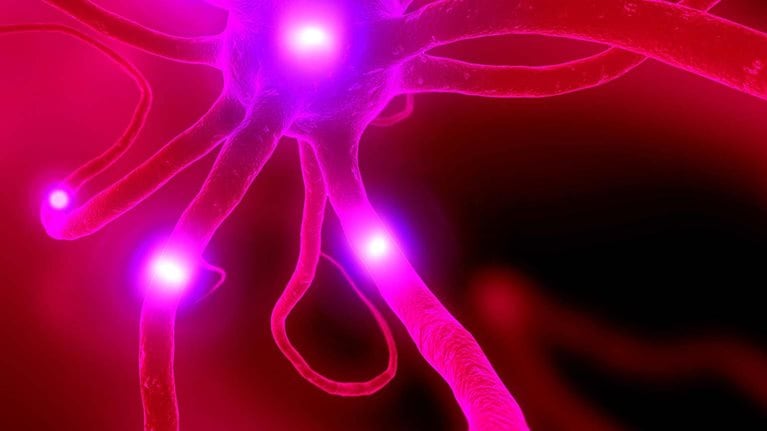Lending institutions know that risk-based segmentation of their outstanding loans does not in itself help get their money back. At-risk customer segments, once identified, need to be approached with the most effective collections strategies. But lenders find that their approaches won’t work for some customers—often enough a lender cannot even get these customers on the phone, let alone convince them to repay their debt. Many, even those who owe money to more than one bank or business, should be able to pay at least a part of their debts. But this group is no more likely to pay than those who are not able to pay due to unemployment or other misfortunes. Clearly, new and innovative treatments are needed. The place to begin is behavioral segmentation, an analysis that uses psychological insights and advanced analytics to build a closer profile of customers within the same risk segment. Based on that profile, new and innovative treatments can be tailored that can improve success rates.
Stay current on your favorite topics
The approach applies a variety of techniques, as by definition, there is no one-size-fits-all solution. Some of the techniques are exclusively applicable to early-stage collections, while others may be more effective in mid- or late-stage efforts. In some situations, a particular technique may achieve full repayment; in others, the same technique will provide incremental improvement. However, the approach costs little to implement and can reap significant rewards. In select collections segments, leading banks using behavioral segmentation have demonstrated improvements of 20 to 30 percent in the amounts collected and the number of loans written off.
Behavioral segmentation
With the readily available data, banks can apply advanced analytics to group at-risk customers into categories that systematically reflect the customers’ subjective experiences and the reasons that they have failed to pay. Nonpayment has a range of causes and motivations, stretching across fuzzy boundaries from material hardship to behavioral dysfunction. Behavioral segmentation, while not an exhaustive framework, is a useful method for mapping subgroups within the larger at-risk segment according to their reasons for not paying.
A recent McKinsey survey of 420 US consumers with credit delinquencies shed light on the various causes of nonpayment. One prominent cause is difficulty in managing money through a monthly cycle. One-third of those surveyed expressed a preference for a weekly or semimonthly repayment schedule. Some respondents said that such rhythms would better conform to their pay days; many said they could better manage smaller, more frequent payments than monthly bills (smaller payments also hurt less). Motivations to pay also varied among respondents. Many overdue customers said that they wanted to maintain a good credit record and easy future access to credit. Others gave more values-based answers, such as a fundamental belief in keeping their commitments. By understanding motivations like these, lending institutions can better encourage payment from their at-risk customers.
Motivations can be particularly important when a customer owes money to several lenders. One-third of survey respondents prioritized payments rationally—for example, by tackling debts with the highest interest rate first or to secure another benefit, such as the retention of their most useful credit card. Payments by the remaining two-thirds followed less rational patterns. These respondents adopted a variety of approaches: they apportioned payments equally or by loyalty to a particular bank; some set up intrinsic milestones, such as paying off the largest or smallest balances first. By discovering particular motivations, banks can either reinforce them with tailored payment plans or help customers adjust their rationales (Exhibit 1).

A need for ‘agency’
The need to exert control or agency in one’s life is a recognized psychological need. To feel in control, many overdue customers refuse to speak to collectors (making effective use of caller ID). At the same time, they also intend to make a payment as soon as they have the money. To serve these customers most effectively, banks should have well-functioning self-service channels allowing partial payments to be made online or with a smartphone. Websites should be offered to permit late-stage delinquent customers to explore and commit to flexible payment plans.
Violating a customer’s need for agency can trigger counterproductive reactions, which psychologists call “reactance.” A customer might refuse to pay simply to assert control. In one survey, 20 percent of respondents said that they withheld a planned payment at least once after receiving an upsetting call from a collector. At the same time, 80 percent of respondents were not unduly disturbed by collections calls, yet clearly many of these would not have made payments without firm prodding.
Behavioral segmentation helps collections managers find the best approaches by customer profile and avoid fatally mismatched ones. Some historically high-risk customers, for example, need to be treated as late-stage delinquent when they are barely two weeks past due. Other customers are so low risk that they can be treated as “self-curing” and only given a gentle service call (a classic early-stage treatment) after several nonresponsive months. Many collectors nonetheless take a simplistic, stereotyped view of their customers—especially late-stage customers. Such ingoing biases can act as self-fulfilling assessments, as the collector’s (behaviorally mismatched) approach triggers an expected (uncooperative) response.
As these observations illustrate, collections strategies and actions will influence customers, positively or negatively, in their complex decisions on whom to pay and when. Customer decisions, like all decisions, are subject to bias and other psychological effects. A previous McKinsey piece, “The business logic in debiasing,” discussed the effect of biases on business decisions. Many of the same biases affect customers and some can keep them from paying. Banks that understand this dynamic can develop interventions to change it. The approach involves offering inducements to help customers resolve their financial troubles and pay down their debts. It is aligned with a growing field of research into irrational human behaviors that surround financial decisions. In October 2017 Richard Thaler, a behavioral economist at the University of Chicago, won the Nobel Prize for his contributions, which analyze the effects of human behavior on financial outcomes. Thaler popularized the term “nudge”—a benign and often small adjustment that counters irrational impulses.
Better carrots and effective nudges
Traditionally banks motivate high-risk customers with a narrow range of carrots and sticks. In the carrot department, banks offer financial incentives, such as an extra amount taken off the balance in return for a payment made by a certain date. Sticks begin with warnings and move on to administrative penalties, such as blocked cards, bad credit reports, and legal actions.
In motivating customers to make payments, however, banks can more effectively offer a wider range of incentives. Many customers even show enthusiasm when creative inducements are offered. Certain biases can be used constructively, as the basis for nudges. Loss aversion is one such bias. A psychological effect discussed in the field of decision theory, loss aversion is the widely held preference for avoiding certain loss over making potential gains. A variant of this effect would come into play if, for example, a bank presented high-risk customers with a late-fee waiver or a gift card from a favorite shop—that they would lose by not making a payment. Framing the offer in this way, as a loss for a foregone payment, can be twice as effective as offering it as a reward for making a payment.
‘Appify’ your nudge
An example from the healthcare field illustrates the potential “to appify the nudge”—to reach certain groups of at-risk customers through mobile apps. In the survey cited above, consumers were asked whether they had achieved a challenging goal other than paying outstanding debts. Among those responding positively, weight loss was the most commonly cited achievement. When asked what incentives they used to promote their diet and exercise regimens, 63 percent said they used small rewards as incentives, while 27 percent said that they tracked their weight.
Health apps have been designed to formalize such incentives, tracking the user’s desired behavior and aligning it with a system of rewards—whether symbolic, such as badges for reaching milestones, or monetary, such as partial rebates for gym membership. Such apps could become models for financial institutions. These incentives would be most useful in approaching the “frequent travelers” of collections shops. These medium-risk customers are frequently behind in payment and often at risk of “falling off the cliff.” However, with the right prodding, they should be able to make mostly regular, partial payments to at least some of their creditors.
Would you like to learn more about our Risk Practice?
Nudges are low-cost incentives presented creatively. To develop apps as nudges, researchers need to understand the complex psychology that causes those able to pay to refrain from paying. But they must also test their designs, modify them according to results, and test again. McKinsey researchers recently testing innovative ideas found that the test group responded most favorably to the concept of an app offering customers a choice of rewards, each worth perhaps $5, at the beginning of a payment cycle. An e-voucher for the chosen reward, visible in the app, is activated when payment is received on time; it disappears when the payment is missed. The sight of the voucher activates loss aversion, thereby doubling efficacy; letting the customer choose the reward (ideally from a set of three options) promotes autonomy, which further increases the intrinsic motivation. The selection of offers can be optimized for emotional relevance based on customer shopping profiles, while the value of the reward can be adjusted based on the loan value at risk. In line with the idea of the nudge, smaller values are often the most cost-effective for triggering intrinsic motivation.
A word of caution: the effects of such apps need to be monitored to avoid unintended consequences. Some banks already offer apps that monitor customer spending and, when triggered, send reminders to spend less. The results have been disappointing, mainly because the apps were deployed indiscriminately, without the guidance of behavioral segmentation. Such reminders are not needed by customers actively struggling to meet their obligations, while they have little effect on irresponsible spenders. Furthermore, they tend to curtail responsible spending by good customers, which banks want to encourage.
Creating habits
By understanding customer motivations and behavior, banks can identify the causes behind some delinquent accounts. Highly indebted customers prone to shopping sprees are likely exhibiting poor self-control and an inability to manage their financial affairs. In such instances, banks can approach the problem by helping customers change their behavior. One proven technique for building self-control is to form a habit around a desired behavior. With certain customers, strict weekly payment schedules are preferred and more effectively habit-forming than monthly cycles. This approach is consonant with insights from addiction treatment and therapies for other behavior-related disorders, where the establishment of routines can be a crucial factor in a patient’s success.
A decision process in four moments
Four moments can be distinguished within a collections episode. At each point, customers make decisions on whether or not to cooperate with the lender. The lender, meanwhile, can use each point to understand customer behavior and identify opportunities to increase the likelihood of repayment—through psychological interventions carefully calibrated to the customer’s profile.
- Opening. When the phone rings, customers must first decide whether to engage with the bank at all. Once they minimally engage by answering, they then decide whether to collaborate with the bank in problem solving (such as by disclosing financial difficulties) or take a defensive or evasive stance.
- Commitment. Once some collaboration has been established, the collector needs to move the customer toward a promise to pay.
- Negotiation. A major part of the conversation will be a negotiation over the customer’s financial limitations and the payment amount to which he or she is willing to commit.
- Follow-through. Finally, the customer needs to keep the promise to pay. This is a complex decision with plenty of opportunities for derailment.
Appropriately reaching out: Interventions based on behavioral segmentation
To increase the likelihood of success in each of these four collections moments, targeted interventions can be made, based on behavioral segmentation. In the opening moment, for example, collectors would do well to understand the psychological concept called “affect.” The term is used to describe the conscious, subjective experience of emotions, apart from physical reactions. By putting the customer in the right mood—a condition of positive affect—the collector will have enhanced customer receptivity. The customer will consequently be open to exploring solutions and become more confident in his or her ability to resolve the situation.
The opposite, negative affect, will impede resolution, so it is important to put the customer at ease. A good approach is to use collectors with profiles similar to the customers’, matching regional dialect, gender, and age. To reach customers that are unwilling to speak on the phone at all (out of shame or anxiety), the use of social media might be a good choice for engagement. Personalized advertisements from credit-card companies offering to help customers through difficult times (“call us at 1-800-000-0000 now”) can put the customer back in control of the time to engage with collections. Of course, if the collector ultimately determines that the customer is not susceptible to engagement using softer approaches, then administrative measures can be initiated.
To achieve commitment, customers must be engaged. Collectors can use a number of approaches to encourage engagement, including telling a customer that the solution being offered has been very popular with other clients. This may trigger the so-called herd effect—a sense of belonging to a group and not wanting to deviate from its norms.
Ensuring that customers keep their promises to pay is arguably the hardest part of the collections episode. In our experience, perceived hassles act as strong disincentives for payment. Banks should always seek to eliminate excuses for breaking promises to pay (and to avoid delinquencies to begin with). This is best accomplished by understanding the preferences of the different behavioral segments and ensuring that the payment methods they most prefer are always available. For example, nearly one-quarter of respondents in one survey said that making payments was needlessly difficult but that they would be more likely to pay if the lender offered more convenient payment methods, such as online or mobile channels (Exhibit 2).

While not much seen in the collections industry, a psychological concept known as “implementation intention” could prove helpful. Developed in the 1990s by cognitive psychologist Peter Gollwitzer, the concept begins with the recognition that people mostly have good intentions when they commit to a goal, even if they do not keep them.1 The formation of implementation intentions explicitly links intentions to their fulfillment. Some institutions have gotten good results by initiating explicit discussions with customers about when, where, and how payments will be made. A typical outcome might be a promise to make a payment at the bank on Friday morning when the customer goes to work. At one bank, this technique increased the rate of fulfilled promises by eight percentage points. The formula may seem simple, but the explicit linkage of intentions to actions can help those who have trouble following through.
Countering bias and fatigue—in collectors
Collectors too experience psychological effects, just as customers do, and these must be taken into account in the collections episode. The collector is faced with several decisions in each of the four moments we have been discussing. The choices are often made subconsciously, on the fly, based on exceedingly simple heuristics. Collector decision making is thus exposed to harmful biases, which can become more pronounced as the day wears on. This effect, brought on by mental fatigue, is called ego depletion. It has been observed in many professions, from law and medicine to journalism and scientific research. At one company we observed the success ratio in collections calls fall by half during the course of a day.

Boosting profitability in collections
Leading banks have been employing conscious countermeasures to support their collectors through these decision points. Some examples will help illustrate the challenges and how they are being addressed. Given the operating environment created by today’s highly efficient power dialers connecting call center staff with delinquent customers, collectors have little time to familiarize themselves with the customers who actually pick up. For this opening moment, collectors need to be able to scan in seconds the one or two crucial insights about the customer answering a call. We have seen situations where a spouse answers and the collector politely requests a callback from the cardholder, not knowing that this has happened a dozen times already. If the system instantly alerts collectors about this crucial fact, they can push beyond the routine evasiveness.
For the commitment phase, an important consideration for the collector is when to give up and move to the next account. Efficiency is important, as collectors must optimize their pay. We have often seen collectors abandon high-risk, high-value accounts too quickly. Incentive systems can help, by reflecting the difficulty of collecting from a particularly intractable account. Yet these systems are often complicated and rather than following them carefully, collectors take heuristic shortcuts inconsistent with the elaborate logic. Nudges can keep things on track. Banks can label accounts with obvious hints about the amount of effort that collectors will find is worthwhile to invest in them.
For negotiation, many banks give collectors plenty of flexibility in setting payment parameters and offering financial incentives. Not surprisingly, some collectors overuse incentives and too often default to the most generous terms. Advanced predictive models can help support collectors in making more discriminating decisions, determining the offer that maximizes value within a narrow set of statistically calibrated options. Voice analytics is now fast and sophisticated enough to enable decision-support systems to make these calculations in real time, based on customer responses.
For the follow-through stage, collectors can make use of insights emerging from advanced analytics, including the most effective “talk-offs” to keep the conversation on track. Banks can use nudges to encourage collectors to invest the time needed to win over customers with a particularly low probability of fulfilling commitments. One lever is to establish implementation intentions with these customers; another is to eliminate perceived barriers.
Getting started: A few recommendations
How can institutions introduce these approaches and techniques into their collections operations? While ultimately a comprehensive program of innovation and continuous improvement will emerge, the following steps can be taken now:
- Make an initial assessment based on four or five behavioral clusters. A pragmatic assessment of behavioral clusters complements the bank’s risk-based segmentation. The primary objective is to divide the at-risk population into several subsegments with distinct behaviors, requiring different treatments. Note that behavioral segmentation can be very powerful for low-risk as well as high-risk groups, enabling the design of different low-cost treatments for each group. Often we use statistical techniques for an initial segmentation, but the most important insights will come from market research with actual delinquent customers, including psychometric surveys and structured interviews.
- Select and design innovative treatments. The treatments will be based on the rich and growing body of psychological research as well as real-life experience with nudges and behavioral insights (Exhibit 3). Given how little experience most banks have with these techniques, most of the innovations are drawn from other industries and the public sector, such as healthcare, insurance claims management, and even government.

Implementing these psychological levers requires continuous piloting and testing, which in turn enables the calibration of dedicated predictive models that continuously optimize the segmentation and choice of intervention for a particular customer.
The application of behavioral segmentation and innovative treatments in collections has its roots in psychological research and advanced statistical-segmentation models. The approach, however, is highly pragmatic and designed to be up and running in three months’ time. It uses existing infrastructure and creative workarounds, especially with respect to IT implementation. The impact on collections success rates can be significant. In a typical case, the use of a behavioral approach achieved a twofold benefit at one bank. Losses were reduced by 20 percent overall, and many fewer cured customers relapsed into a further delinquency. As lasting results such as these are achieved, collections managers can then go to work to ensure that the most effective innovative treatments become the new norm.


